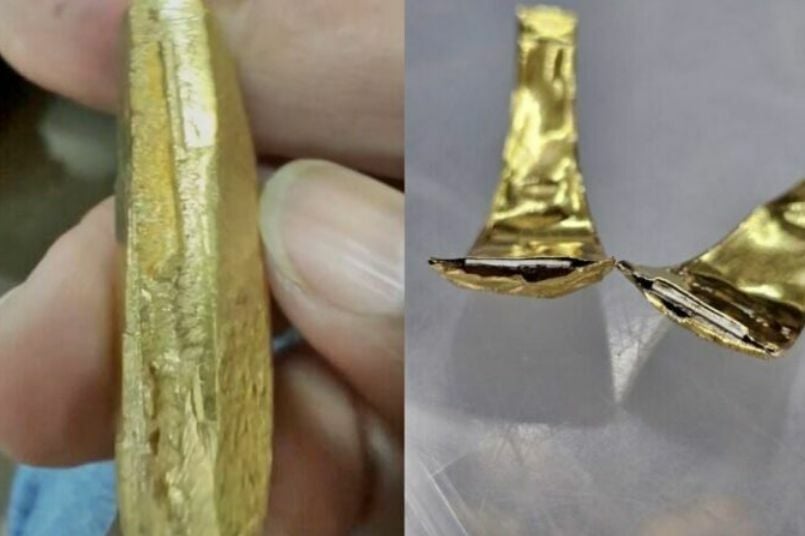Gold forgery alert: Thailand’s GIT cautions against new technique

A warning about a new method of gold forgery was issued by the Gem and Jewelry Institute of Thailand (GIT). Fraudsters have been found to mix stainless steel powder with gold, making it nearly indistinguishable to the naked eye. Advanced equipment is required for detection, according to Sumeet Prasongpongchai, the director of GIT.
The fraudsters have been known to craft the mixture into vintage-style gold pieces, making it nearly impossible for buyers to identify the fakes without specialised equipment. Regular checks and smaller laboratories without the necessary tools fail to detect counterfeit gold due to the sophisticated blending techniques employed.
Sumeet explained that to verify the authenticity of the gold, one would have to melt it down to separate its chemical elements or cut the gold piece to check its consistency. Genuine gold will appear homogenous and shiny when cut, but if layers of different metals are visible, other metals have certainly been mixed in.
Gold forgery methods have been evolving to circumvent detection, especially as the value of gold has risen, currently exceeding 34,000 baht per baht weight, which has led criminals to seek more profit opportunities.
Various forms of counterfeit gold, such as A-grade gold, micron gold, cladding gold, gold-filled, and fake gold jewellery have been discovered. The latest method involves inserting stainless steel powder inside the gold, making detection even more challenging. Both gold shops and pawnshops have increasingly fallen victim to the sale of counterfeit gold.
For those wishing to buy or invest in gold, GIT advises choosing shops that have received quality certification from reliable agencies. This ensures the purchased products are of quality and standard. Alternatively, choose shops that participate in the Buy With Confidence (BWC) programme, certified by GIT. These shops guarantee the sale of good quality, standard-compliant products reported KhaoSod.
As for gold inspection, visual checks alone are no longer sufficient. GIT, the national gem and jewellery inspection laboratory, has advanced equipment that can clearly distinguish between genuine and counterfeit gold without damaging the item.
The X-ray fluorescence (XRF) technique, which analyses the types and quantities of elements in a sample, has been certified by the National Institute of Metrology (Thailand) for its scope in analysing gold (Au) percentage, providing a reliable and standardised method of detection.
Follow more of The Thaiger’s latest stories on our new Facebook page HERE.
Latest Thailand News
Follow The Thaiger on Google News:


























